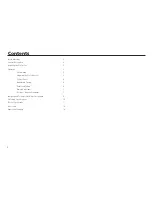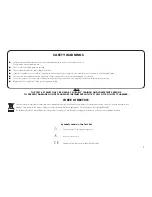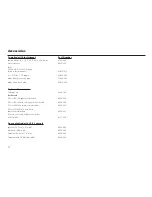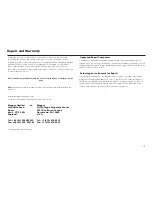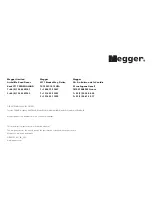
The following notes should be read in conjunction with the relevant oil testing
specifications.
Causes of Bad Oil
Transformers and switchgear oil may be rendered unsuitable for further use due to
four main reasons:-
1.
Low dielectric strength.
2.
High acidity.
3.
High sludge content.
4.
Excessive free water content.
Low dielectric strength may result from many causes, the most common of which
is foreign particles or fibres and water in combination. Individually their effect may
be relatively small, but together a contamination of only a few parts in a million can
cause considerable lowering of the breakdown voltage of the oil. High acidity, sludge
and free water should not be tolerated, but will not necessarily reduce the dielectric
strength below acceptable or specified levels.
Appearance of the Sample
Only an experienced person can judge the condition of an insulating oil from its
appearance, but a general guide may be obtained from the following observations:-
5.
A cloudy appearance may indicate that sludge has been formed.
6.
A dark yellow colour could be a sign of overheating.
7.
A blackish colour often results from an arc having taken place with either
carbonisation of the oil or of the insulation within the equipment.
8.
A green colour may be due to copper salts dissolving in the oil.
Cleanliness of the Apparatus
The necessity for scrupulous cleanliness in the apparatus and during the process of
sampling, cannot be over emphasised. The measurement of the dielectric strength
of the sample is as dependent on the cleanliness of the test cell and the sampling
apparatus as the condition of the oil itself.
After cleaning the apparatus, it should under no circumstances be wiped, dried or
even handled with a dusty or fibrous cloth as loose dust or fibres are liable to cause
contamination.
Precautions Necessary During Sampling
Since the oil taken from a drain cock will inevitably contain an excess of settled out
solid impurities, and will not necessarily be representative of the bulk of the oil, it
should be run to waste until clear.
Always run off a quantity of oil into a glass bottle or a test tube for an initial check on
the appearance of the oil. Attention to this point may prevent contamination of a clean
test vessel.
If necessary, thoroughly clean and dry the sample point using a suitable solvent. Any
cloth used should be lint free. Open the sample cock and drain to waste enough oil to
ensure that the sample cock is fully flushed and the sample is representative of the bulk
of oil to be tested. This quantity will depend upon the size of the transformer or main
container. About 2 litres is usually suitable.
When sampling from a drum or supply container, the oil should flow at a steady rate
into the test vessel and after being swilled around the sides it should be discarded.
Without altering the rate of flow of the oil the quantity required for the test should
then be run off while taking extreme care to prevent the ingress of atmospheric dust,
cloth fibres or moisture.
Do not use a syphon. In the absence of a usable sample point, use a ‘thief’.
Shield the sample from direct light until ready to be tested.
Turbulence and air bubbles should be avoided when pouring the oil. Relevant national
specifications should be observed.
Sampling and Testing Oil for Dielectric Strength
8


